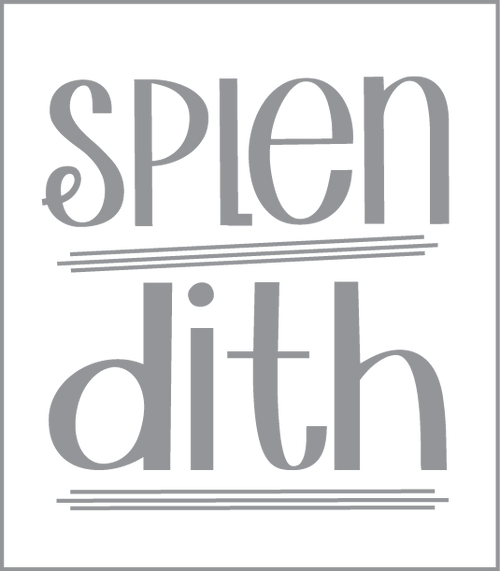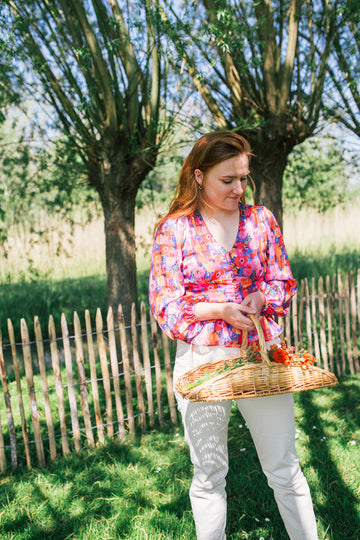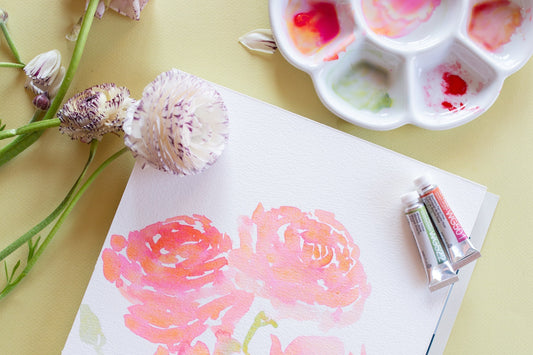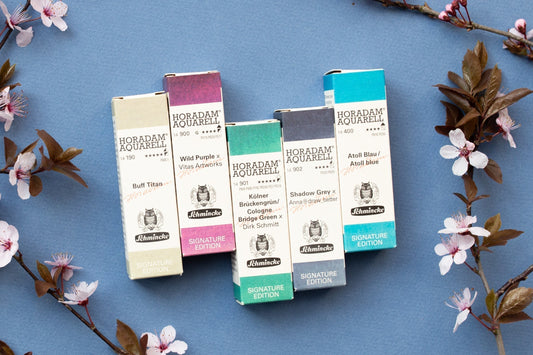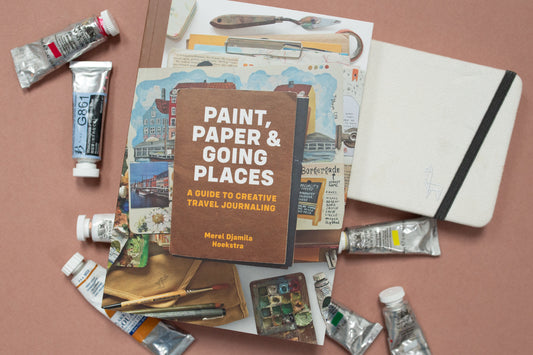
Watercolor: A transparent watercolor
Watercolor is my go-to paint for most of my painting. Watercolor is perfect for light, transparent layers and subtle color transitions. What I love about watercolor is the way it behaves on paper. It really soaks into the paper, so it doesn’t just sit there as a layer. By using different techniques, you can make the colors flow into each other beautifully, for a dreamy effect. By working layer upon layer, you can paint very precisely. This makes watercolor perfect for landscapes, flowers and other precision work.
Different uses for watercolor paint:
- Landscapes: The soft color transitions are perfect for sky, water and mountains.
- Flowers: Watercolor lets you capture the fine details and delicate colors of flowers. You can also paint very lush flowers, without too much detail.
- Portraits: The transparency helps create soft skin tones and expressive faces.

Gouache: an opaque watercolor
Gouache, unlike watercolor, is my choice when I need rich, opaque colors. It has the same base as watercolor, but works with a different composition that makes the paint opaque. Artist quality gouache is made with pigments without adding white to make it opaque. So even with gouache you have bright colors. This makes gouache ideal for illustrations or graphic work and anything where you need strong, opaque colors.
Different Applications for Gouache
- Illustrations: The matte, opaque finish is perfect for detailed work and clean lines.
- Posters and Graphic Work: The bright, opaque colors really pop off the paper.
- Collages and Mixed Media: Gouache adheres well to different types of paper and can easily be combined with other materials.
The Practical Differences
Transparency vs. Opacity:
Watercolor: Transparent and light, perfect for layers and color transitions.
Gouache: Opaque, ideal for rich, matte colours.
Reactivation:
Both watercolour and gouache can be re-wetted and re-worked. Even after the paint is dry.
Ease of use:
Watercolor: Requires a bit more practice to master the fluidity and transparency. Also, the quality of paper is even more important than with gouache.
Gouache: Easier to correct due to the higher coverage.
Drying time
Watercolor: Dries quickly, but because you use more water, it can take longer for a layer to dry.
Gouache: Dries quickly.
Which Paint Do You Choose for Which Application?
Watercolor is chosen if you want transparent layers and/or a nice color gradient. Suitable for precise or very loose and airy work.
Gouache is used for illustrations, graphic work, and whenever you need rich, opaque colors.
Bonus tip:
In our shop we have everything you need to try both watercolor and gouache. My advice? Experiment with both! It is very personal what you like to work with. Find out what works best for your style and projects by using it.
Love,
Judith
